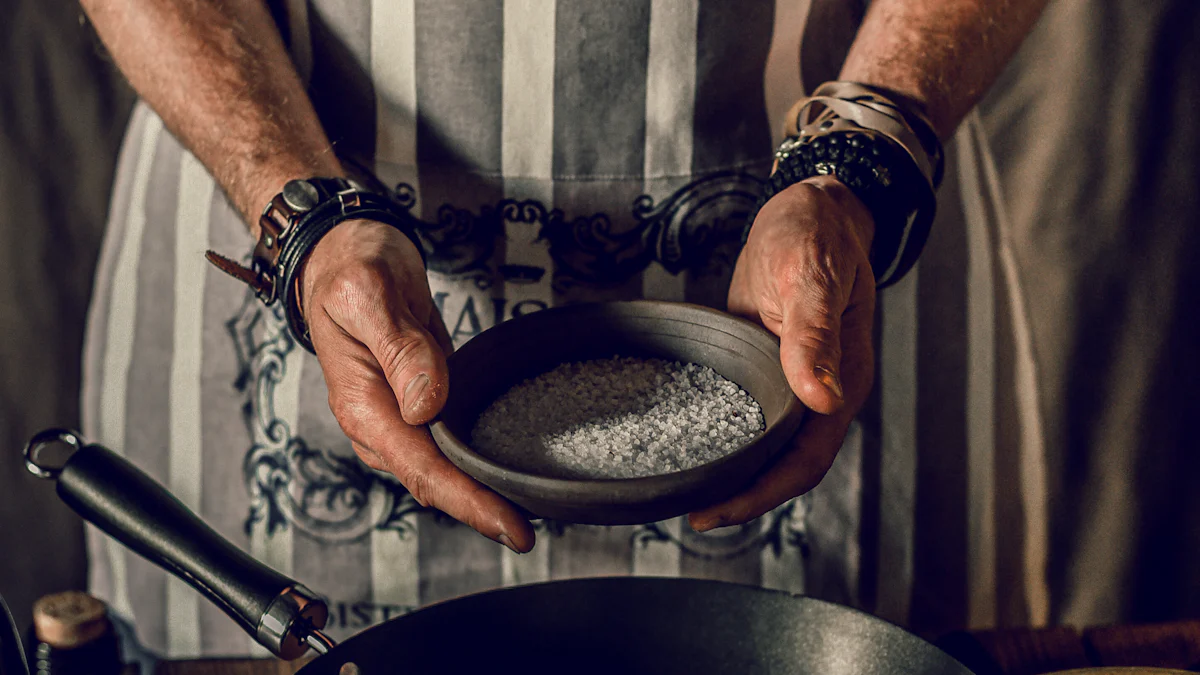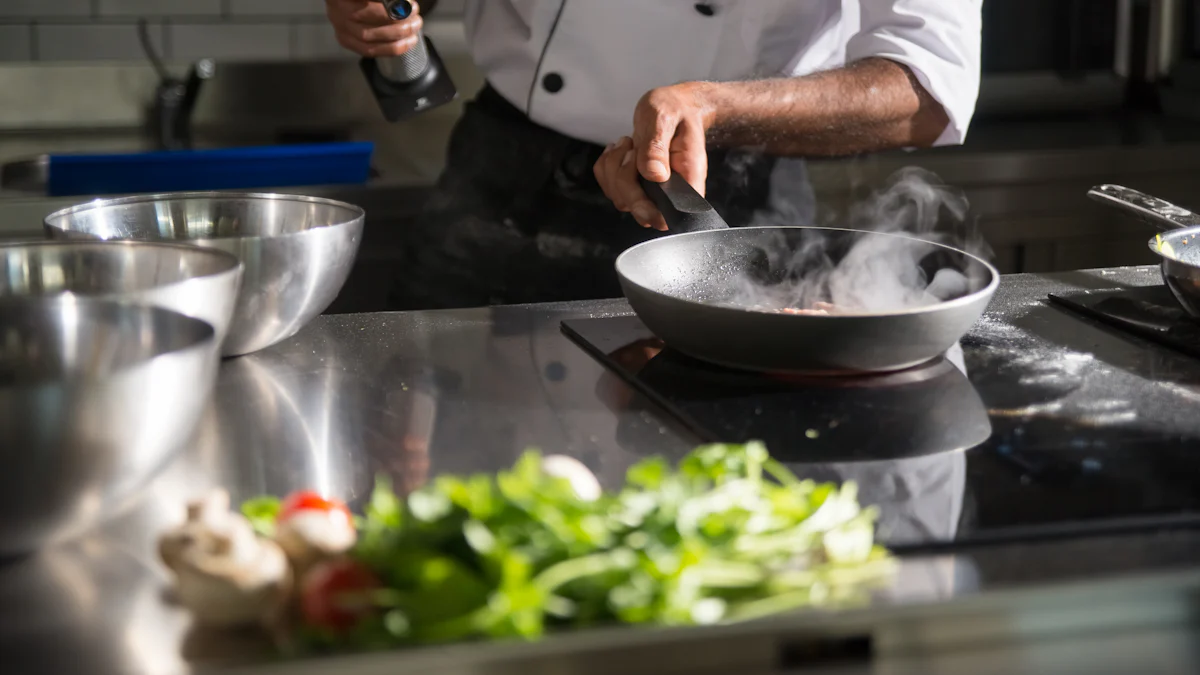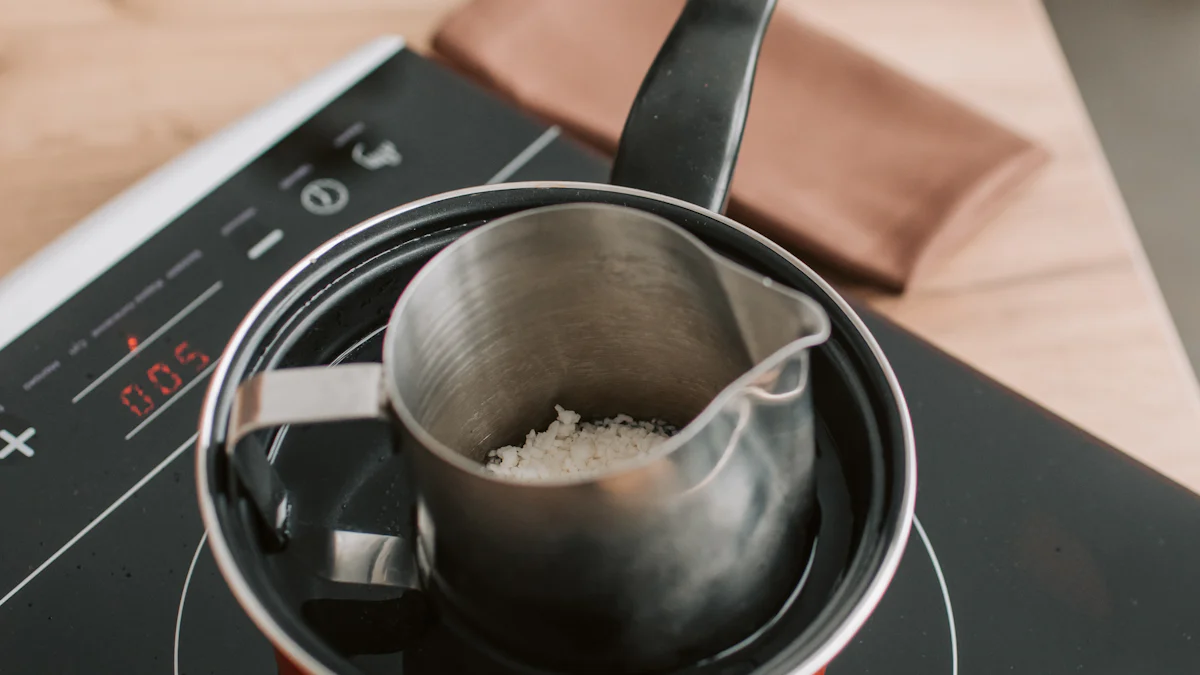How to turn an ordinary cookware into an induction pot using an induction disk or induction converter?

Ever wondered if you could use your favorite cookware on an induction cooktop? You can, with the help of an induction disk or converter. These handy tools let you transform ordinary pots and pans into induction-compatible ones. Induction cooktops work by creating a magnetic field that heats the cookware directly. This means faster cooking and more energy efficiency. However, not all cookware is naturally compatible. That’s where the induction disk comes in, bridging the gap and expanding your kitchen possibilities.
Key Takeaways
- Transform your favorite non-magnetic cookware into induction-compatible pots with an induction disk, allowing you to enjoy the benefits of induction cooking without replacing your entire set.
- Choose a high-quality induction disk that matches the size and thickness of your cookware for optimal heat transfer and cooking performance.
- Preheat your cookware on the induction disk to ensure even cooking and monitor your cooking closely to adjust heat settings as needed.
- Maintain your induction disk by cleaning it regularly with mild soap and inspecting it for damage to ensure safety and longevity.
- Induction disks can slightly increase cooking times, so be patient and allow extra time for preheating and cooking to achieve the best results.
- Always check the compatibility of your induction disk with your cooktop to avoid any potential issues and ensure safe cooking practices.
Understanding Induction Cooktops
Induction cooktops have revolutionized the way you cook by using magnetic fields to generate heat directly in the cookware. This method is not only efficient but also quick, making it a favorite among modern kitchens. Let’s dive into how these cooktops work and why some of your cookware might not be compatible.
How Induction Cooktops Work
Induction cooktops use electromagnetic energy to heat pots and pans. When you turn on the cooktop, it creates a magnetic field. This field interacts with the metal in your cookware, causing it to heat up. Unlike traditional stoves, the cooktop itself doesn’t get hot. Instead, the heat is generated directly in the cookware, which means faster cooking times and less energy waste. You can think of it as a direct transfer of energy from the cooktop to your pot or pan.
Why Some Cookware Isn’t Compatible
Not all cookware works with induction cooktops. For the magnetic field to generate heat, your cookware needs to have a magnetic base. If a magnet sticks to the bottom of your pot or pan, it’s likely compatible. Materials like cast iron and some stainless steels work well. However, glass, copper, and aluminum typically don’t. That’s where an induction disk comes in handy. It acts as a bridge, allowing you to use your favorite non-magnetic cookware on an induction cooktop. By placing the induction bottom plate on the cooktop, you create a magnetic surface that transfers heat to your cookware.
Introducing Induction Disks and Converters

You might wonder how you can use your favorite non-magnetic cookware on an induction cooktop. That’s where induction disks and converters come into play. These tools make it possible to bridge the gap between your existing cookware and the modern technology of induction cooking.
What is an Induction Disk?
An induction disk is a flat, round piece of metal that you place on your induction cooktop. It acts as a mediator between the cooktop and your non-magnetic cookware. The induction disk is made from magnetic materials, allowing it to interact with the cooktop’s magnetic field. When you place your cookware on top of the disk, it transfers the heat from the cooktop to your pot or pan. This way, you can use your beloved glass, copper, or aluminum cookware without any hassle. The induction disk ensures that you don’t have to replace your entire set of pots and pans just to enjoy the benefits of induction cooking.
How Induction Converters Work
Induction converters function similarly to induction disks but often come with additional features. They not only transfer heat but also help regulate the temperature for more consistent cooking. You place the converter on the cooktop, and it creates a magnetic surface. Your cookware then sits on top of this surface, allowing the heat to pass through efficiently. Some converters even have handles for easy placement and removal, making them user-friendly. By using an induction converter, you can expand your cooking options and enjoy the speed and efficiency of induction cooking without investing in new cookware.
Step-by-Step Guide to Using Induction Disks

Ready to transform your ordinary cookware into induction-compatible pots and pans? Let’s walk through the process of using an induction disk. This guide will help you choose the right disk and use it effectively with your cookware.
Choosing the Right Induction Disk
Selecting the perfect induction disk is crucial for optimal cooking performance. Look for a disk made from high-quality magnetic materials. This ensures efficient heat transfer. Check the size of the disk. It should match the base of your cookware. A disk that’s too small won’t distribute heat evenly. Consider the thickness as well. Thicker disks tend to retain heat better, which can improve cooking results. You can find induction disks at specialty kitchen stores or online retailers. Take your time to read reviews and compare options before making a purchase.
How to Use an Induction Disk with Your Cookware
Once you’ve got your induction disk, it’s time to put it to use. Follow these steps to ensure a smooth cooking experience.
Preparing Your Cookware
Before you start, make sure your cookware is clean and dry. Any moisture or residue can affect heat transfer. Check the bottom of your pot or pan. It should be flat to sit evenly on the induction disk. If your cookware has a warped base, it might not heat evenly.
Placing the Induction Disk Correctly
Position the induction disk directly on the cooktop. Ensure it sits flat and stable. Place your cookware on top of the disk. Align it so that the disk covers the entire base of the pot or pan. This alignment helps in even heat distribution. Avoid moving the cookware around once it’s in place. This can disrupt the magnetic connection.
Adjusting Cooking Settings
Turn on your induction cooktop. Start with a low to medium heat setting. Induction disks can heat up quickly, so it’s best to adjust gradually. Monitor your cooking closely. You might need to tweak the temperature as you go. Remember, cooking with an induction disk might take a bit of practice. With time, you’ll get the hang of it and enjoy the benefits of induction cooking.
Impact on Performance and Safety Considerations
When you use an induction disk, you might notice some changes in how your cookware performs. It’s important to understand these changes to make the most of your cooking experience and ensure safety.
Cooking Performance with Induction Disks
Using an induction disk can slightly alter how your cookware heats up. You might find that it takes a bit longer for your pots and pans to reach the desired temperature. This happens because the disk acts as an intermediary, transferring heat from the cooktop to your cookware. While this process is efficient, it may not match the speed of direct induction-compatible cookware.
To get the best results, keep a few tips in mind:
- Preheat Wisely: Allow extra time for preheating. This ensures your food cooks evenly.
- Monitor Closely: Keep an eye on your cooking. Adjust the heat as needed to prevent overcooking or burning.
- Experiment with Settings: Try different heat settings to find what works best for your recipes. You might need to tweak your usual cooking times and temperatures.
Safety Tips for Using Induction Converters
Safety should always be a priority when using any kitchen appliance. Induction converters are no exception. Here are some tips to ensure a safe cooking experience:
- Check Compatibility: Make sure your induction disk is compatible with your cooktop. Some manufacturers advise against using converters, so it’s wise to consult your cooktop’s manual.
- Avoid Overheating: Induction disks can get very hot. Avoid touching them directly during or after cooking. Use oven mitts or pot holders when handling cookware.
- Stable Placement: Ensure the disk and cookware sit securely on the cooktop. Unstable placement can lead to spills or accidents.
- Regular Inspection: Check your induction disk for any signs of wear or damage. Replace it if you notice any issues to maintain safety and performance.
By understanding these performance impacts and safety considerations, you can enjoy the benefits of using an induction disk while keeping your kitchen safe and efficient.
Tips for Maintaining Cookware and Ensuring Efficient Cooking
Keeping your cookware in top shape and ensuring efficient cooking with an induction disk can enhance your kitchen experience. Here are some practical tips to help you maintain your tools and make the most of your cooking sessions.
Cleaning and Care for Induction Disks
Taking care of your induction disk is essential for its longevity and performance. Here’s how you can keep it in pristine condition:
-
Regular Cleaning: After each use, let the induction disk cool down completely. Then, wash it with warm soapy water. Use a soft sponge to avoid scratching the surface. Rinse thoroughly and dry with a clean towel to prevent rust.
-
Avoid Harsh Chemicals: Steer clear of abrasive cleaners or steel wool. These can damage the disk’s surface and reduce its effectiveness. Stick to mild detergents and gentle cleaning tools.
-
Inspect for Damage: Regularly check your induction disk for any signs of wear or damage. Look for cracks or warping. If you notice any issues, consider replacing the disk to maintain safety and efficiency.
-
Proper Storage: Store your induction disk in a dry place. Keep it away from moisture to prevent rust. You can hang it or place it flat in a drawer, ensuring it doesn’t get scratched by other utensils.
Best Practices for Efficient Cooking
To get the best results from your cooking, follow these best practices:
-
Preheat Your Cookware: Allow your cookware to preheat on the induction disk before adding ingredients. This ensures even cooking and helps lock in flavors.
-
Use the Right Heat Settings: Start with a lower heat setting and gradually increase as needed. This prevents overheating and helps you maintain control over the cooking process.
-
Monitor Cooking Times: Keep an eye on your food as it cooks. Adjust the heat if necessary to avoid burning or undercooking. Each dish might require different settings, so be flexible.
-
Optimize Cookware Placement: Ensure your cookware sits evenly on the induction disk. This promotes uniform heat distribution and improves cooking efficiency.
By following these tips, you can maintain your cookware and enjoy efficient cooking with your induction disk. Happy cooking!
Using induction disks to convert your ordinary cookware offers numerous benefits. You can enjoy the speed and efficiency of induction cooking without replacing your entire set of pots and pans. This approach saves money and expands your cooking options.
“Innovation distinguishes between a leader and a follower.” – Steve Jobs
Why not give induction converters a try? They provide a versatile solution for modern kitchens, allowing you to explore new recipes and cooking techniques. Embrace this technology and transform your culinary experience today!
FAQ
What is an induction disk, and how does it work?
An induction disk is a flat metal plate that you place on an induction cooktop. It acts as a bridge between the cooktop and non-magnetic cookware. The disk interacts with the cooktop’s magnetic field, heating up and transferring that heat to your cookware. This allows you to use pots and pans that aren’t naturally induction-compatible.
Can I use any cookware with an induction disk?
You can use most types of cookware with an induction disk, including glass, copper, and aluminum. However, ensure that the cookware has a flat base for even heat distribution. If the base is warped, it might not heat evenly, affecting your cooking results.
Are induction disks safe to use?
Yes, induction disks are safe when used correctly. Always ensure the disk and cookware sit securely on the cooktop. Avoid touching the disk directly during or after cooking, as it can get very hot. Use oven mitts or pot holders to handle cookware safely.
Will using an induction disk affect cooking times?
Using an induction disk might slightly increase cooking times. The disk acts as an intermediary, so it takes a bit longer for the cookware to reach the desired temperature. Preheat your cookware and monitor cooking closely to achieve the best results.
How do I clean and maintain my induction disk?
Clean your induction disk with warm soapy water and a soft sponge after each use. Avoid abrasive cleaners or steel wool, which can damage the surface. Dry the disk thoroughly to prevent rust and store it in a dry place.
Can induction disks damage my cooktop?
Induction disks are generally safe for cooktops, but always check your cooktop’s manual for compatibility. Some manufacturers advise against using converters due to potential effects on the cooktop’s electronics. Regularly inspect your disk for wear or damage to maintain safety.
Where can I buy an induction disk?
You can find induction disks at specialty kitchen stores and online retailers. Look for disks made from high-quality magnetic materials and read reviews to ensure you’re getting a reliable product.
Do induction disks work with all induction cooktops?
Most induction disks work with standard induction cooktops. However, it’s wise to check the specifications of both the disk and your cooktop to ensure compatibility. Some cooktops may have specific requirements or recommendations.
How do I choose the right induction disk for my cookware?
Select an induction disk that matches the size of your cookware’s base. A disk that’s too small won’t distribute heat evenly. Consider the thickness of the disk as well; thicker disks tend to retain heat better, improving cooking performance.
Can I use an induction disk for all types of cooking?
You can use an induction disk for most cooking methods, but it might not be ideal for high-precision tasks like searing. The disk can alter heat distribution slightly, so experiment with different settings to find what works best for your recipes.
Post time: Dec-19-2024
